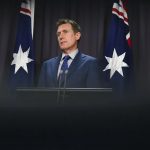The answer is blowin’ in the wind

Former Greens’ leader Bob Brown opposed a $1.6 billion plan to build up to 163 turbines on Robbins Island in his home state’s north west, describing it as an “aileron too far”.
He told the ABC 7.30 program “it is in the wrong place, will ruin the view and kill endangered birds like the Tasmanian wedge-tail eagle and the white-breasted sea eagle that live on the island, and potentially migratory birds like the swift parrot and the orange-bellied parrot that travel between Tasmania and the mainland. We have alternatives for renewable energy. We don’t have alternatives for extinct species of birds.”
On SBS News, Dr Brown defended his opposition to the proposed wind farm saying he remains a fierce supporter of renewable energy, but it was a case of “everything in moderation”. “We’re in an age where it’s predicted 30 per cent of Australia’s birds will go to extinction this century because of human pressures. And we have to think about biodiversity.”
For over 100 years, Victoria has enjoyed cheap electricity generated by burning brown coal. However, we now understand that part of the true cost of electricity was transferred (externalized) to the environment in the form of carbon emissions to the atmosphere.
The proposed ‘Star of the South’ offshore windfarm would generate about the same amount of electricity as the (now closed) Hazelwood power station. Electricity would be supplied via the existing nearby Basslink cable that connects the Tasmanian electricity grid to the Australian mainland. The economic efficiency of such an arrangement seems obvious.
At its nearest point, the windfarm would be roughly 25 km from the east side of Wilson’s Promontory. It would also be situated adjacent to Corner Inlet which is listed under the international Ramsar Convention. The area includes habitat for numerous species of plants, animals and fish but is especially important for the protection of migratory birds. To be fair, the proponents are conducting marine and wildlife surveys to determine what impact the project may have on the environment.
The windfarm turbines would all be located within about 60 km of Wilson’s Promontory and their height would be approximately 245 metres above sea level. From a position 40 metres above sea level, all of the nearest tower would be above the horizon 25 km east of the Prom and the top half of the most distant towers would be above the horizon. About half of the 400 towers would be above the horizon from 100 metres above sea level. From 235 metres above sea level on the Prom, the most distant towers 60 km to the east would be above the horizon.
Dr Brown claimed that wind turbines on Robbins Island would be “in the wrong place and would ruin the view”. It seems reasonable to expect the ‘Star of the South’ windfarm would at times have a significant visual impact from the Prom. and elsewhere, depending on your point of view, of course.
Now we must decide if we are willing to pay the true cost of electricity to protect recreational and environmental values. The alternative is to trade off those values in exchange for cheaper electricity as it was with coal. Only this time ignorance of the consequences won’t be a valid excuse.

Max Thomas, Dip. Agric. (retired) worked in the public sector and in private consulting on a range of land, water and waste management projects. He prepared guidelines for irrigation with recycled water for EPA Victoria and developed a number of Environmental Management Systems in the water industry.











